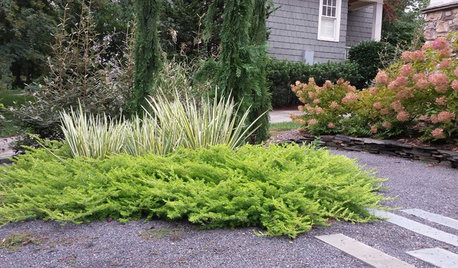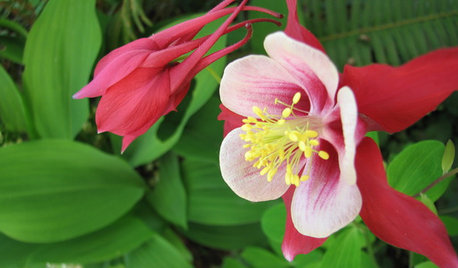Plants that aren't low growing
AnnabelleS
9 years ago
Related Stories

GARDENING GUIDESWhat’s in a Name? See 6 Wildflowers That Aren’t ‘Weeds’ at All
Dispel the stereotypes of weeds and try these wildlife-supporting native wildflowers in your garden
Full Story
PLANTING IDEASThese Aren’t Your Grandparents’ Junipers
Dislike junipers? Maybe it’s time to discover new varieties and new uses for this garden workhorse
Full Story
NATIVE PLANTSGreat Native Plant: Grow Wild Quinine for Its Unique Clusters of Blooms
Get connoisseur cred and unique blooms with this uncommon plant. Bonus assets: It’s low maintenance and drought tolerant
Full Story
GARDENING GUIDESAlpine Plants: High Performers at Low Altitudes Too
So Heidi and the goats aren't your neighbors. Alpine plants can be lovely and low maintenance on difficult sites beyond the mountains
Full Story
LIFEYou Said It: ‘It’s Different ... But Then, Aren’t You?’ and More Wisdom
Highlights from the week include celebrating individuality and cutting ourselves some decorating slack
Full Story
HOUSEPLANTS10 Top Plants to Grow Indoors
Brighten a room and clean the air with a houseplant that cascades artfully, stretches toward the ceiling or looks great on a wall
Full Story
GARDENING GUIDES7 New Plants to Grow for Beautiful Foliage
Add color, structure and interest to your garden with these recently introduced plants that sport exceptional foliage
Full Story
GARDENING FOR BUTTERFLIESGreat Design Plant: Columbine Grows Happily in Shade and Sun
Its ethereal beauty comes from complex forms and wide-ranging colors, but columbine’s benefits are highly attractive too
Full Story
GARDENING GUIDES9 Low-Growing Hedges That Make Good Neighbors
Define garden areas or borders without blocking the view, with these evergreen shrubs that take kindly to trimming
Full Story
GARDENING GUIDES8 Plants That Snobs Love to Hate — and You'll Love to Grow
Don't dismiss these common annuals, perennials and shrubs — there are reasons they've been popular for so long
Full StorySponsored
More Discussions






AlyoshaK
Lisa_H OK
Related Professionals
Baltimore Landscape Architects & Landscape Designers · Horsham Landscape Architects & Landscape Designers · Norton Shores Landscape Architects & Landscape Designers · Peabody Landscape Contractors · Commack Landscape Contractors · Framingham Landscape Contractors · Fruit Heights Landscape Contractors · New Berlin Landscape Contractors · North Haven Landscape Contractors · Paramount Landscape Contractors · Welby Landscape Contractors · Brookfield Decks, Patios & Outdoor Enclosures · Norman Decks, Patios & Outdoor Enclosures · North Myrtle Beach Decks, Patios & Outdoor Enclosures · Olathe Decks, Patios & Outdoor EnclosuresLisa_H OK
AnnabelleSOriginal Author
Okiedawn OK Zone 7
Lisa_H OK
Okiedawn OK Zone 7
AlyoshaK
MiaOKC
AlyoshaK
Okiedawn OK Zone 7
Lisa_H OK
MiaOKC
Okiedawn OK Zone 7
AlyoshaK
AlyoshaK
MiaOKC
Lisa_H OK